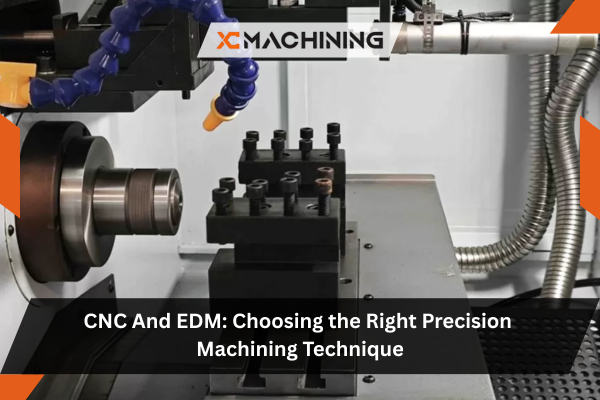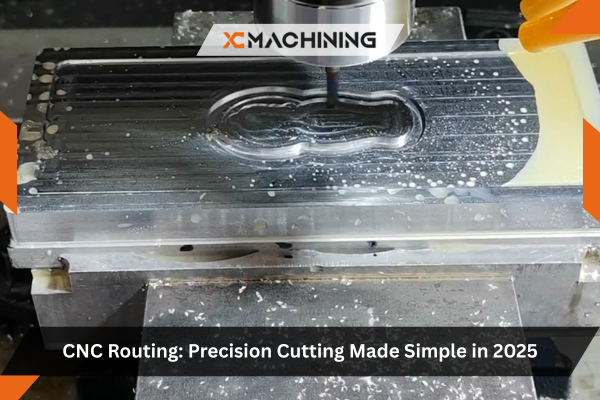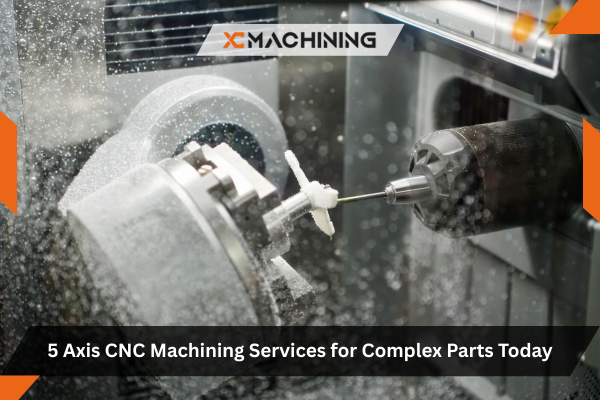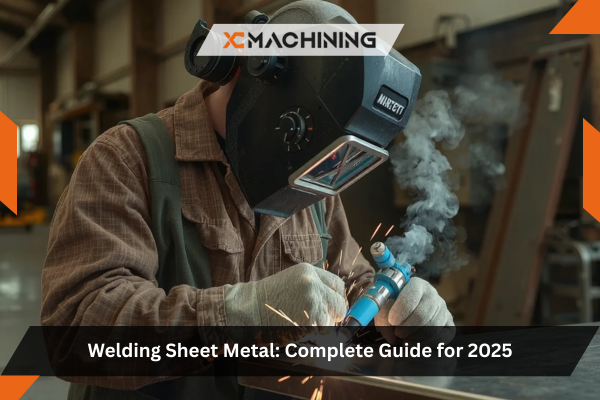Imagine you’re running a factory and need to create a part with intricate details. You have two options: CNC machining or EDM machining. Both are great choices, but which one is the right fit for your project? That’s the big question.
CNC and EDM are two popular methods of precision machining that businesses use to create high-quality parts. Whether you’re working with metals, plastics, or other materials, these technologies have distinct advantages. But how do you choose the right one?
In this blog, we’ll dive into the world of CNC and EDM, comparing how each works, the benefits they offer, and when to use them for your projects. If you’re trying to decide between CNC and EDM for your next job, keep reading to find out which technique is best for you.
Understanding The Basics of CNC and EDM
CNC machining (Computer Numerical Control) is a manufacturing process that uses computers to control machines like drills, lathes, and mills. The process involves creating a 3D design of the part and then using the CNC machine to follow the exact design with great accuracy.
Here’s why businesses love CNC machining:
High Precision
CNC and EDM are both highly accurate machining techniques. CNC machines, for instance, can cut and shape materials with extreme accuracy, making them perfect for parts that require tight tolerances and precise fitting. This level of detail ensures that parts function correctly, which is essential for industries like aerospace and automotive manufacturing.
Speed
Once a CNC machine is set up and the program is loaded, it can produce parts quickly and efficiently. This speed makes it ideal for high-volume production runs, enabling businesses to meet tight deadlines and keep costs down without sacrificing quality.
Automation
CNC machines are designed to run with minimal human intervention. After the initial setup, they can operate autonomously for long periods, reducing the need for skilled labor on the shop floor and lowering labor costs. Automation also helps reduce the risk of human error, leading to more consistent results.
Materials for CNC machining:
- Metals: Aluminum, stainless steel, brass
- Plastics: PVC, nylon, polycarbonate
- Wood: For custom woodwork or furniture design
CNC machining is widely used for industries that require precision and efficiency, such as automotive, aerospace, and electronics.
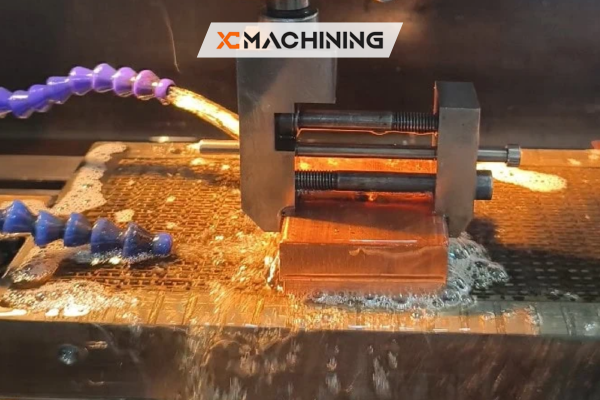
What is EDM Machining?
EDM (Electrical Discharge Machining) is a precision machining technique that uses electrical sparks to shape or cut metals. This method is especially useful for hard metals or when intricate shapes are needed.
How EDM machining works:
- A spark is created between an electrode and the material.
- The spark melts the material, which is then washed away by a flushing process.
- This is repeated layer by layer until the desired shape is achieved.
Here’s why you might choose EDM machining:
- Intricate Shapes: EDM can create complex shapes and details that other methods can’t.
- Hard Materials: It’s perfect for cutting hard metals like titanium or hardened steel.
- No Tool Wear: Since the process involves electrical sparks instead of cutting tools, there’s no wear and tear on traditional cutting tools.
Industries using EDM:
- Aerospace: For creating parts like turbine blades and precision components.
- Medical: For manufacturing surgical instruments and implants.
- Tooling: EDM is used to make molds and dies.
CNC and EDM: Key Differences and Similarities
Now that we know what each process does let’s compare CNC and EDM in more detail. Although both are precision CNC machining tolerance techniques, they have some important differences.
- Speed: CNC machining is typically faster because it uses mechanical cutting tools to remove material quickly. EDM, on the other hand, is slower because it uses electrical sparks to melt away material layer by layer.
- Material Types: CNC works well with a variety of materials, including metals, plastics, and wood. EDM is best suited for hard metals and materials that are difficult to machine.
- Accuracy: EDM is often considered more precise for creating intricate designs, especially when working with hard or brittle materials. CNC is highly accurate but might not be able to match EDM’s ability to work with complex shapes.
- Cost: Cost of CNC is generally more effective for larger runs of simple parts. EDM is ideal for complex, custom parts but can be more expensive because it takes longer to complete.
Materials Used in CNC and EDM Machining
The types of materials used in CNC prototype machining can greatly affect the process choice. Both techniques can work with metals, plastics, and other materials, but some materials are better suited for one method over the other.
CNC Materials:
- Metals: Steel, aluminum, copper, titanium
- Plastics: ABS, polycarbonate, PTFE
- Wood: For projects requiring intricate designs or custom shapes
EDM Materials:
- Hard Metals: Titanium, Inconel, stainless steel (perfect for hard or heat-resistant metals)
- High-Carbon Steels: Ideal for tooling, mold-making, and other high-precision applications
Understanding the right material for your project can help you decide whether CNC or EDM is the better choice.
Industries That Benefit from CNC and EDM
Both CNC and EDM machining technologies are used across multiple industries. Let’s explore how these techniques benefit businesses in key sectors:
- Automotive: CNC is used for high-volume production of parts like engine components, chassis, and interior elements. EDM is used for more complex parts like fuel injector nozzles.
- Aerospace: CNC machining helps produce lightweight, precise parts for aircraft. EDM is used to make detailed, hard components like turbine blades and fuel systems.
- Medical Devices: EDM is ideal for making complex surgical tools and implants. CNC machining is used to manufacture medical devices like hearing aids or prosthetics.
- Electronics: Both CNC and EDM are used for the production of electronic components, circuit boards, and connectors.
Surface Finishing with CNC and EDM
Surface finishing refers to how smooth or rough the final product’s surface is after machining. Both CNC and EDM offer different surface finishes, which can affect the quality of the product.
CNC Surface Finishing:
- Smooth Finishes: CNC machines can provide smooth, polished finishes on materials like plastics or metals.
- Rough Finishes: CNC is also useful for roughing out material quickly before finer finishes are applied.
EDM Surface Finishing:
- Smoother Surfaces: EDM often results in smoother surfaces due to the nature of electrical sparks.
- No Tool Wear: Since there are no physical tools touching the material, EDM leaves very few tool marks, resulting in a cleaner surface.
The choice of surface finish depends on the final use of the part and the requirements for strength and aesthetics.
Why CNC is Ideal for High-Volume Production
CNC machining is a perfect choice for high-volume production runs. Once the machine is set up and the design is loaded into the system, it can produce identical parts at a rapid pace with minimal human intervention.
- Automated Operations: CNC machines are automated, reducing labor costs and human error.
- Cost Efficiency: CNC is ideal for mass production, allowing for efficient use of materials and time.
- Repeatability: CNC machines can replicate parts consistently, which is important for industries like automotive manufacturing.
For businesses needing high quantities of the same part, CNC machining is often the most efficient option.
Why EDM is Best for Custom and Intricate Designs
EDM machining shines when it comes to creating custom parts or parts with intricate, detailed designs. This technique is often used in industries like aerospace, medical, and tooling, where precision and complexity are crucial.
- Custom Parts: EDM can make complex shapes that would be impossible or expensive to create with other methods.
- Hard Materials: EDM works well with hard metals and alloys that other machining methods struggle to handle.
- Fine Details: EDM allows for detailed cuts and designs, perfect for industries that require high levels of customization.
If your project requires unique designs or specialized materials, EDM is likely your best option.
Cost Considerations for CNC and EDM
The cost of CNC and EDM machining depends on several factors:
- CNC Costs: Typically more cost-effective for larger production runs, especially if parts are simple and don’t require intricate details.
- EDM Costs: EDM tends to be more expensive due to longer processing times and the specialized nature of the equipment, but it’s invaluable for complex parts or hard metals.
Understanding your budget and production needs can help you decide between CNC and EDM machining.
Choosing Between CNC and EDM for Your Project
When deciding between CNC and EDM, consider the following:
- Material: Is your material soft and easy to cut, or is it hard and heat-resistant?
- Complexity: Does your design require intricate, detailed cuts?
- Production Volume: Are you producing one-off custom parts or high-volume, mass-produced items?
By evaluating these factors, businesses can choose the most suitable machining method for their needs.
The Role of CNC and EDM in Prototyping
Both CNC and EDM play a crucial role in prototyping. Whether you need a quick prototype to test a new design or a highly detailed version, these methods allow businesses to create and test prototypes efficiently.
- CNC Prototyping: Fast and cost-effective for simple designs, allowing businesses to quickly create multiple iterations.
- EDM Prototyping: Best for complex designs that need intricate details or hard-to-machine materials.
Both technologies help streamline the prototyping process, allowing businesses to test ideas quickly before moving to full-scale production.
The Future of CNC and EDM Technologies
The future of CNC and EDM machining looks bright. Both technologies are evolving with advancements in software, automation, and materials science. In 2025, we expect:
- Faster Speeds: Both CNC and EDM technologies will become faster, reducing production time.
- Greater Precision: Technological advancements will push the limits of accuracy in both methods.
- More Materials: CNC and EDM will continue to expand the range of materials they can work with, including more advanced alloys and composites.
Staying on top of these trends will help businesses remain competitive in the evolving manufacturing landscape.
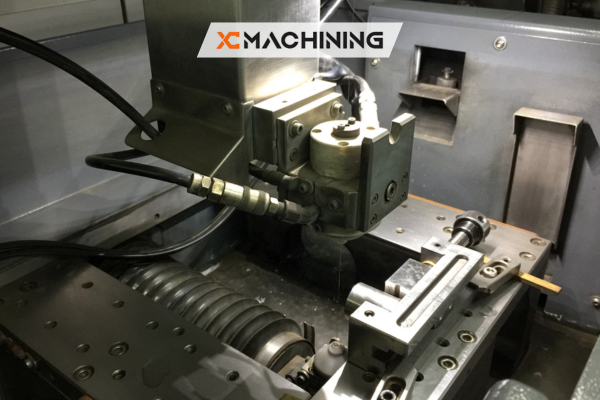
Metal Fabrication and Sustainability with CNC and EDM
As sustainability becomes more important in manufacturing, both CNC and EDM are helping businesses reduce waste and improve energy efficiency. CNC aluminum machining, for example, use only the necessary amount of material, minimizing waste. EDM allows for precise cuts, reducing the need for post-processing or rework.
- Less Waste: Both methods are designed to minimize material waste.
- Energy Efficiency: Newer machines are more energy-efficient, which lowers operational costs.
- Recycling: Many industries are using recycled materials in CNC and EDM processes, further improving sustainability.
In 2025, these technologies will play an even bigger role in sustainable manufacturing practices.
CNC and EDM in Quality Control
Both CNC and EDM contribute to high-quality production. CNC machining ensures parts are accurate and consistent, which is crucial for industries that need precise parts for assembly. EDM provides detailed parts that require little to no finishing, which enhances overall quality control.
- CNC Quality: High repeatability for parts that need to meet specific tolerances.
- EDM Quality: Intricate designs and smooth finishes straight from the machine.
Both technologies ensure that products meet high standards, helping businesses reduce defects and improve quality.
Conclusion
When choosing between CNC and EDM, it’s important to evaluate your needs. CNC machining is great for mass production and simpler designs, while EDM shines when dealing with complex, custom parts. By understanding the differences, businesses can select the right technique for their projects.
Which method will you choose for your next project: the speed and efficiency of CNC or the precision and customization of EDM? The choice is yours!
FAQs
What is CNC machining?
- CNC (Computer Numerical Control) machining uses a computer to control machines like lathes, mills, and drills to shape materials. It’s fast, precise, and works well for large production runs.
What is EDM machining?
- EDM (Electrical Discharge Machining) uses electrical sparks to erode and shape material. It’s perfect for intricate designs and hard materials that are difficult to machine with traditional methods.
Which is faster: CNC or EDM?
- CNC machining is generally faster than EDM. CNC machines can quickly cut through softer materials like aluminum, while EDM works more slowly but offers higher precision for detailed parts.
Which technique is more cost-effective?
- CNC machining is typically more cost-effective for larger runs of standard parts, as it’s faster. EDM can be more expensive due to slower processing times, but it’s ideal for small, highly detailed parts or hard-to-machine materials.

